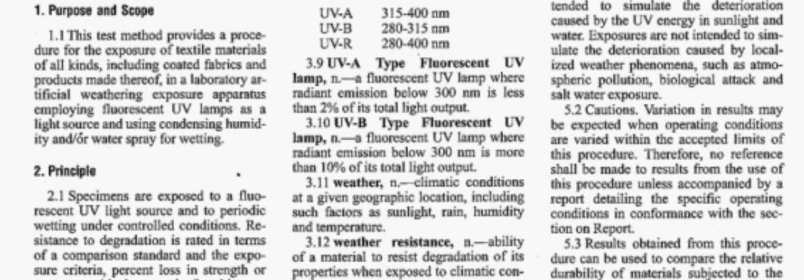UV Light and Moisture Exposure

AATCC TM186-2001 pdf free.Weather Resistance: UV Light and Moisture Exposure. 8.1 The test cycle is best detcrmincd by the influencing factors of the end use, in paticular, thc clirmatic oonditionsNot allmatcrials are affected equally by the same environmcnt.Results obtained by the use of any one test cycle may not berepresentative of thosc of any other test cycles or any ouldoor […]
Continue reading »







